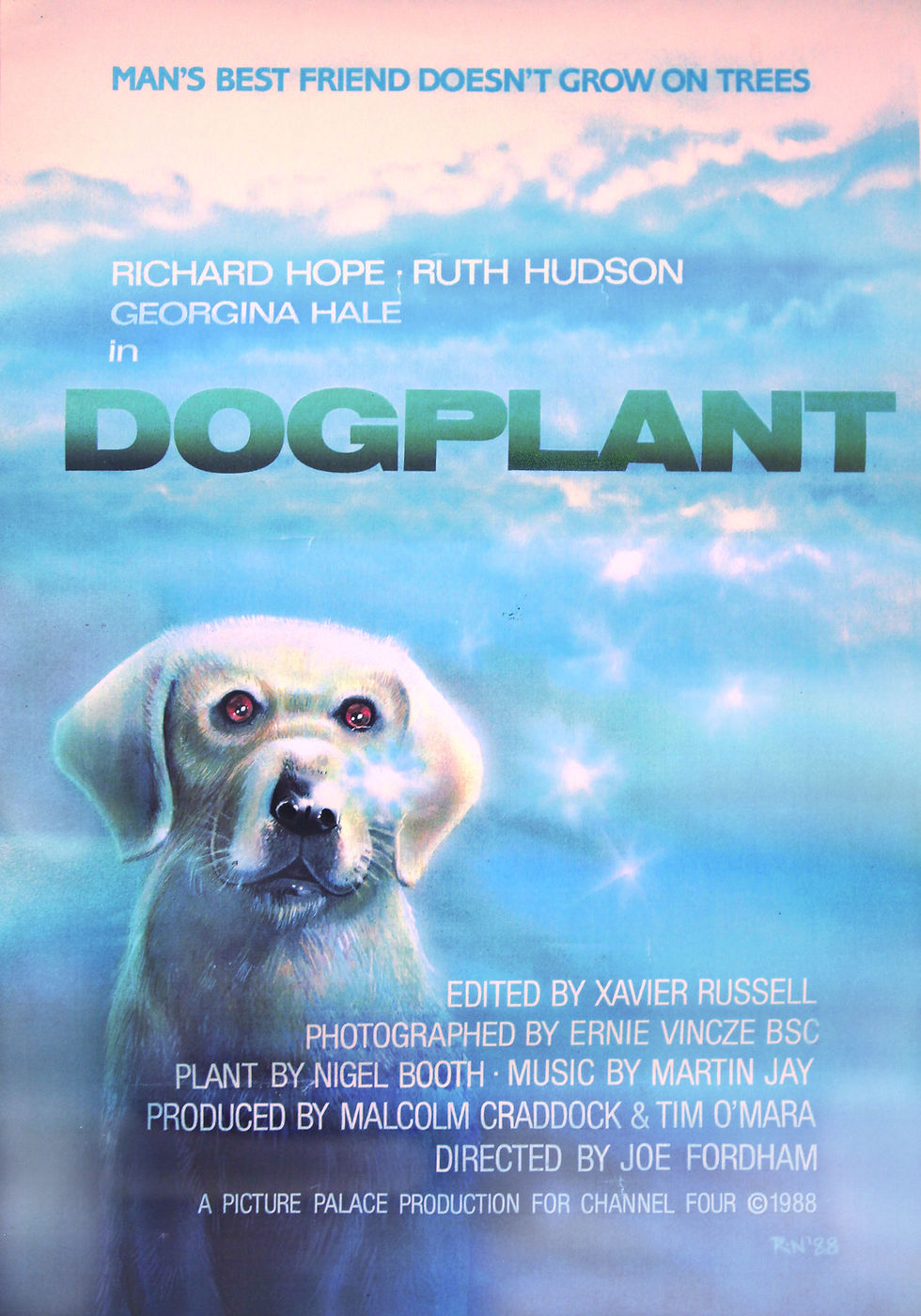Wendy Wind Blows
- flashfilms8
- Oct 7, 2014
- 4 min read
Updated: Dec 12, 2024
Reprint from Flashfilms, October 2014.

Back in 1985, when I was working as an assistant film editor in London, I accepted an assignment that turned into two years’ work in the basement of TVC London. The animation studio had produced the Beatles’ animated feature The Yellow Submarine and the short film based on Raymond Briggs’ Christmas story The Snowman. The job involved running TVC’s in-house cutting room, piecing together footage for their animated feature based on a very different Raymond Briggs illustrated book, When the Wind Blows.
My days consisted of inserting tiny little bits of film, a few feet at a time, into the already-edited reels that the film editor, my former boss John Cary, and director, Jimmy Murakami, had cut together as ‘animatics’ of filmed storyboards and dialogue. Jimmy had already directed the film, essentially, as a radio play with the film’s two characters, Jim and Hilda Bloggs, played by Sir John Mills and Dame Peggy Ashcroft.

The animatic reels laid out how scenes would play, shot by storyboarded shot. They then filmed backgrounds in a model set, a novel technique devised to create a storybook 3D feel for all the interiors of Jim and Hilda’s house. Those backgrounds, printed onto photographic paper, became the basis for hand-drawn animation, which was inked and painted onto transparent cels, and then filmed flat on an animation rostrum, laid over the pin-registered prints of the model frames.
It took two years to put all that together, and I am greatly simplifying the process here. I made a lot of friends on the show, earned my union ticket, and the film went on to gain somewhat of a cult reputation. It’s a very black comedy, and not easy to sit through as it is unrelentingly sad, showing the effects of a nuclear attack on Britain slowly killing Jim and Hilda. Working on the film made me go slowly out of my mind between the ages of 21 and 22. I have chattered about my experiences online, and that is how a friend of mine, music and video producer Nick Redman, got to hear about it.

Nick is a lovely chap, despite being a Chelsea Football Club fan. He’s a fellow BAFTA/LA member, an erudite film historian and an ardent supporter of film music. We met as fellow ex-patriots at a film music concert in LA. I was thrilled to make Nick’s acquaintance, as he has been responsible for many great restorations of classic movie scores that I loved, including a magnificent 2-disc set of Jerry Goldsmith’s complete Alien, and other classics by our mutual favorites Bernard Herrmann, Alfred Newman and Jerry Fielding.
In recent years, Nick’s video label Twilight Time has been producing Blu-rays of rare and forgotten movies, classics and cult hits. A few months back, Nick let me know When the Wind Blows was on the cards, and he invited me to provide a spoken commentary. My first reaction was, ‘Why me?’ And I started to panic when I learned I would be the only commentator. I was just a kid filing trims on the movie, I told Nick; I had no creative input.
But Nick, in his gentle wisdom, convinced me that he valued my fly-on-the wall perspective. Plus, I later reasoned, I’ve been working as a journalist for the last 17 years, deconstructing movies for Cinefex magazine for 12 of those, so I could speak with some objectivity, looking back on the film I worked on 28 years ago.

While visiting my family in the UK last summer, I did some research by meeting my old friend Paul Donnellon, who I first encountered on ‘Wendy Wind Blows,’ as we liked to call it. Back then, Paul was an assistant animator; he now has his own animation company Voodoodog in London. I sat with Paul in his Voodoodog office and scribbled notes as we chatted about working with Jimmy Murakami, Paul’s former mentor, who sadly died earlier this year. I also exchanged emails with Taylor Grant, who was TVC’s full-time editor. Taylor was a very tall Canadian, with copper red hair and a mellifluous voice that reminded me of Donald Sutherland. He had some wonderful stories, some unprintable, but both Paul’s and Taylor’s insights led me to compile 12 pages of notes that I brought into the recording studio.

In my research, I also dug out a mucky animation cel of Jim Bloggs that I had saved from way back when, and I brought that with me as my mascot. The chat went pretty well. Nick had a very laid-back interviewing style, which helped me relax, and I had fun reflecting on two years of my life, seeing this old movie with new eyes. I think I mentioned to Nick, I did not really appreciate the film back then, but seeing it again I found it quite emotional and affecting. And it felt good to stick a flag in a little bit of movie history.
Nick, just kidding about Chelsea :)
Post script: The Twilight Time Blu-ray was chockablock – with isolated music and effects track, audio commentary by Nick and me, vintage ‘making of’ featurette The Wind and The Bomb, archival interview with Raymond Briggs, and a 2010 feature-length documentary Jimmy Murakami: Non-Alien directed by Sé Merry Doyle. That and the BFI reissue are both now out of print, and Nick left us far too soon. But I’m proud to have been involved and glad to see, years later, the movie found an audience.










Comments